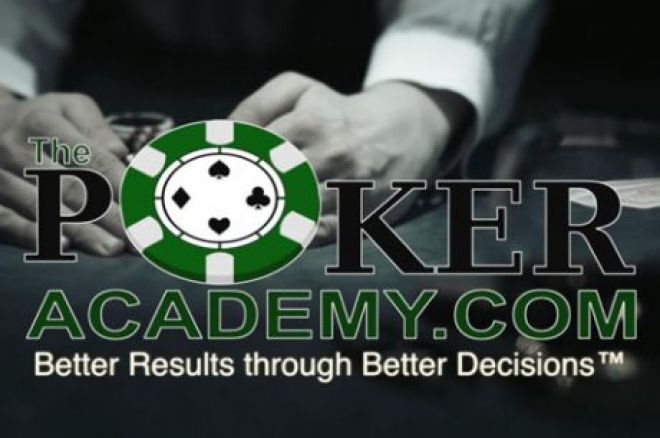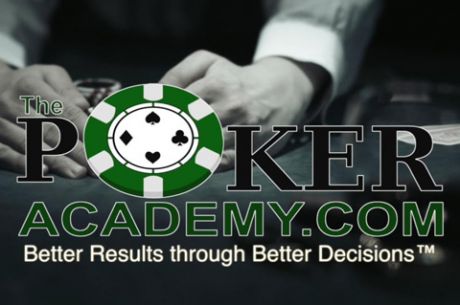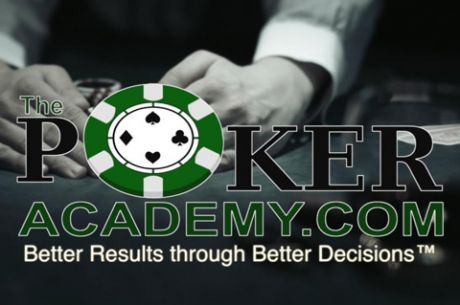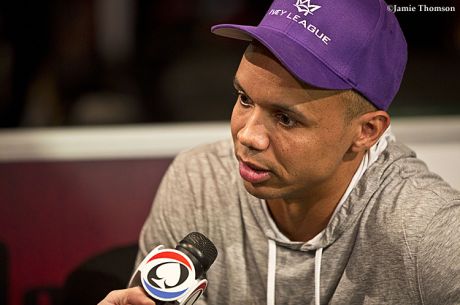ThePokerAcademy.com Presents Accumulating Chips vs. Survival Part III

ThePokerAcademy.com is a new online education site led by Rep Porter and Rick Fuller. Their purpose is to teach you how to be a SIGNIFICANTLY better tournament player. ThePokerAcademy.com believes that having a good, solid understanding of tournament play, strategies, and dynamics is critical in this process. They firmly believe that poker is a game of decision-making, and that the best players in the world are the ones who consistently make better decisions. As such, their goal is to help you achieve "Better Results through Better Decisions."
Over the next couple of weeks, as the 2015 World Series of Poker plays out at the Rio All-Suite Hotel & Casino in Las Vegas, ThePokerAcademy.com will be offering you free poker content straight from Porter, a two-time bracelet winner who has already cashed numerous times this summer!
In the first article in this series, ThePokerAcademy.com started by introducing the idea of your "tournament life," and in last week's article they tried to show you what surviving was worth when you reach the final table. Now, ThePokerAcademy.com continues their series with Part III:
Today, we want to discuss the value of surviving when you are approaching the money bubble. In Part 4 of the series, which will run in one week, we will discuss what to do just after the bubble breaks.
To really understand want a min-cash is worth, we want to start by comparing it to what surviving is worth when you are at the final table of a tournament. Let��s start by looking at what the prizes look like in a 1,000-player WSOP field.
| Place | % Payout | Total Buy-ins | Place | % Payout | Total Buy-ins | |
|---|---|---|---|---|---|---|
| 1st | 20.25% | 202.50 | 16-18th | 0.74% | 7.44 | |
| 2nd | 12.53% | 125.34 | 19-27th | 0.61% | 6.12 | |
| 3rd | 7.84% | 78.42 | 28-36th | 0.51% | 5.11 | |
| 4th | 5.69% | 56.92 | 37-45th | 0.43% | 4.32 | |
| 5th | 4.20% | 42.02 | 46-54th | 0.37% | 3.69 | |
| 6th | 3.15% | 31.50 | 55-63rd | 0.32% | 3.19 | |
| 7th | 2.40% | 23.96 | 64-72nd | 0.28% | 2.80 | |
| 8th | 1.85% | 18.47 | 73-81st | 0.25% | 2.49 | |
| 9th | 1.44% | 14.43 | 82-90th | 0.22% | 2.24 | |
| 10-12th | 1.14% | 11.42 | 91-99th | 0.21% | 2.06 | |
| 13-15th | 0.92% | 9.16 | 100-117th | 0.19% | 1.90 |
Notice we included how many buy-ins that each place actually receives. This is the most effective way to compare what surviving is worth at different stages. Using the total buy-ins returned, you see that by surviving from 10th to 6th, as we discussed last week, you gain 20 buy-ins in guaranteed money and still have a chance to win, which would be worth 200 buy-ins.
So now when we look at what surviving is worth as you approach the money, min-cashing for 1.9 buy-ins seems paltry. That said, cashing is real. Money is good.
So the question is, what is the cost of just surviving? If you are an average stack with 125 people left and you have to blind down to half of an average stack to get into the money, then you are giving up about half of your equity in all the other prizes. Just looking at first place alone, if you are a player of average skill for the field, you are 1 in 125 to win. Your equity in first place is 202 buy-ins divided by 125 people, or 1.6 buy-ins. Losing half of that alone is worth .8 buy-ins.
Second place is worth 125 buy-ins total; as an average person you are worth one buy-in in equity (if all players have the same stack). Losing half of that equity costs you .5 buy-ins. So just looking at the lost equity in first and second place, you can lose 1.3 buy-ins in equity while hoping to min-cash for 1.9 buy-ins. Once you start to consider all the spots, blinding down can cost you more than the min-cash in total tournament equity.
Many people start to play considerably tighter when they get to 150 people, or 180 people, or 250 people left because they are getting close to the money. If you are playing too tight and folding hands that you think are winners just to survive, you are costing yourself more in the grand scheme than the min-cash is worth. We feel that your stack size both in total blinds and relative to the field should be the overriding factor in determining whether you are trying to survive or accumulate as you approach the money.
When you have a decent sized stack, say 50 big blinds or more, you should always be trying to accumulate chips. Your short-stacked opponents will be trying to get into the money and be folding too often.
The medium stacks, 30-50 big blinds, should be trying to find enough opportunities to win some chips and maintain their chip stacks and get into the money before taking more risk. Similar to surviving at the final table, you aren��t giving up any equity in the higher spots, and are going to receive a reward when your opponents bust.
However, if you are approaching the bubble and are short stacked, you can be in a position where it is right to allow yourself to blind down to guarantee cashing before you choose to gamble. When you have a stack size of a quarter to a third of average, or less than 20 big blinds, you might not be losing much extra equity by losing half of your stack. It can make sense to wait until you get into the money to gamble it up.
Next week, in the fourth and final part of out series, we will discuss how actually being in the money should affect your survival vs. accumulation strategies.
In the meantime, go to ThePokerAcademy.com to get started with a free tournament poker kit. It will include nearly two hours of videos on how to use your chips as weapons in tournaments, a series of articles on common misconceptions and problems in poker, a link to download pokerstove and a tutorial on how to use it, and a hand range booklet that will help you establish ranges right at the table while you're playing.
Also, be sure to like The Poker Academy on Facebook and follow them on Twitter @ThePokerAcad.
Want to stay atop all the latest from the 2015 WSOP? If so, make sure to get PokerNews updates on your social media outlets. Follow us on Twitter and find us on both Facebook and Google+!








